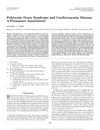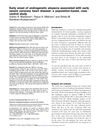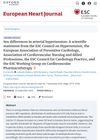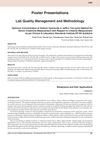Improving Translational Research in Sex-Specific Effects of Comorbidities and Risk Factors in Ischemic Heart Disease and Cardioprotection: Position Paper and Recommendations of the ESC Working Group on Cellular Biology of the Heart
May 2020
in “
Cardiovascular Research
”
ischemic heart disease cardioprotection sex-specific differences pathophysiology risk factors comorbidities hypertension left ventricular hypertrophy cardiopulmonary diseases vascular diseases immune system anemia infections IHD heart disease heart protection high blood pressure heart muscle thickening lung and heart diseases blood vessel diseases immune response low red blood cell count
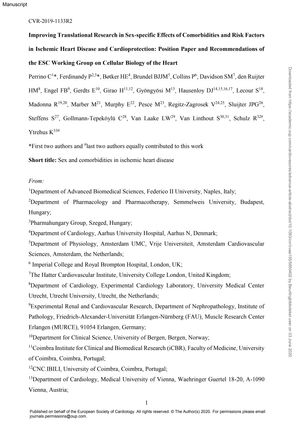
TLDR The document concludes that future heart disease research should account for sex-specific differences to improve diagnosis, treatment, and outcomes.
The document from June 2, 2020, emphasizes the significance of sex-specific differences in ischemic heart disease (IHD) and cardioprotection research. It points out that sex influences the pathophysiology, incidence, clinical presentation, diagnosis, treatment, and outcomes of IHD. The authors note that risk factors and comorbidities associated with IHD often have different impacts on males and females, which can affect the development and prognosis of the disease. However, most experimental studies on IHD do not consider these differences. The paper recommends that future research should include sex as a biological variable, explore the biological mechanisms behind sex-related differences in IHD risk factors and comorbidities, and use preclinical models that reflect these differences. The document also calls for more research to understand the sex-specific effects of comorbidities and risk factors on IHD, such as hypertension, left ventricular hypertrophy, and various cardiopulmonary and vascular diseases, as well as the role of the immune system and blood diseases like anemia and infections. It suggests that educational programs should raise awareness of sex differences in biology and medicine, and that research should not be limited to common comorbidities but should address a wider spectrum of diseases. The document concludes with recommendations for future research, including the use of both sexes in experimental protocols, clear reporting of experimental details, interdisciplinary approaches, and consideration of sex-specific effects in grant and manuscript reviews.

